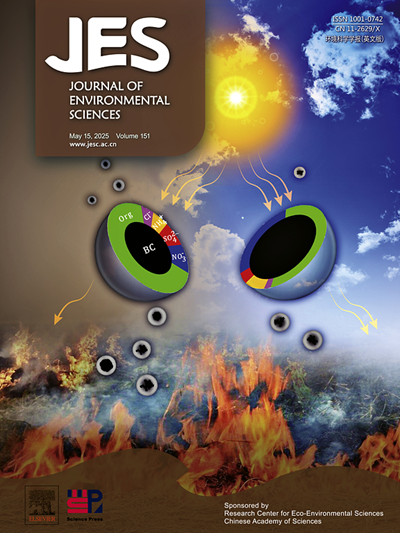Growth behavior of heavy metal sulfide particles: A comparison between gas-liquid and liquid-liquid sulfidation
IF 5.9
2区 环境科学与生态学
Q1 ENVIRONMENTAL SCIENCES
引用次数: 0
Abstract
Sulfide precipitation is an effective method for treating acidic heavy metal wastewater. However, the process often generates tiny particles with poor settling performance. The factors and mechanisms influencing particle size and settling performance remain unclear. In this study, the growth behavior of CuS particles generated by two sulfide precipitation methods, gas-liquid and liquid-liquid sulfidation, was investigated. The effects of acidity, sulfur-to-copper molar ratio, and temperature on particle size were analyzed. The results showed that increasing the temperature had an adverse effect on CuS particle growth. Additionally, we found that acidity and sulfur-to-copper molar ratio had a more significant impact on particle growth in the liquid-liquid sulfidation system than in the gas-liquid sulfidation system. Based on supersaturation calculations and XPS analysis, it is found that particle growth in gas-liquid sulfidation systems is mainly influenced by supersaturation, while particle growth in liquid-liquid sulfidation systems is mainly affected by surface charge. This study provides valuable insights into the factors that influence particle growth in sulfide precipitation and can inform the development of strategies to improve the effective precipitation of sulfide nanoparticles in acidic wastewater.
求助全文
约1分钟内获得全文
求助全文
来源期刊

Journal of Environmental Sciences-china
环境科学-环境科学
CiteScore
13.70
自引率
0.00%
发文量
6354
审稿时长
2.6 months
期刊介绍:
The Journal of Environmental Sciences is an international journal started in 1989. The journal is devoted to publish original, peer-reviewed research papers on main aspects of environmental sciences, such as environmental chemistry, environmental biology, ecology, geosciences and environmental physics. Appropriate subjects include basic and applied research on atmospheric, terrestrial and aquatic environments, pollution control and abatement technology, conservation of natural resources, environmental health and toxicology. Announcements of international environmental science meetings and other recent information are also included.
 求助内容:
求助内容: 应助结果提醒方式:
应助结果提醒方式:


